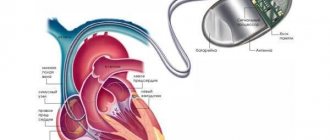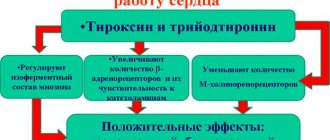Every year, heart disease kills up to 18 million people of all ages. The lion's share of these deaths could be prevented if the impending problem was noticed early and sought medical attention.
Unfortunately, it's not that simple. Heart failures are often disguised as a slight ailment or body peculiarities. Here is a list of not always obvious symptoms that indicate possible heart disease.
Like 25
73515
People over 60 years of age, as well as those who are overweight, have diabetes, hypertension or high cholesterol, should be especially vigilant.
Shoulder and chest pain
The most common sign of a heart problem, which manifests itself in different ways. The pain can be aching, pressing, stabbing, may be accompanied by shortness of breath, dizziness, and may radiate to the left arm or shoulder blade. It occurs due to a disruption in the flow of blood (and oxygen) to the heart. It is important to separate such pain from that associated with neurosis. In the latter case, it disappears if you change the position of the body and is devoid of other alarming symptoms.
Features of heart attack in women
Although pain is the most common symptom of a developing heart attack in men, women most often experience less obvious signs such as shortness of breath, jaw or back pain, and nausea. Moreover, patients often delay seeking medical help for possible symptoms of a heart attack. This could be due to anything from not wanting to bother others to less obvious symptoms. Sometimes the attack is similar to the symptoms of poisoning, and pain occurs in the pit of the stomach. Don’t be shy or delay: you need to call an ambulance and at least take an ECG (listen to the heart) to rule out dangerous complications.
Snoring and sleep problems
This is not only a sign of respiratory system disorders, but also a possible symptom of heart disease. Weak snoring, which stops after changing your posture, should not frighten you or your family. It becomes dangerous if breathing stops for a few seconds during sleep, a feeling of suffocation occurs, which leads to a sharp awakening.
Irregular heartbeat
Arrhythmia (as this symptom is called) occurs due to problems with blood pumping. The heart is trying to reach the “proper” speed or volume, so there is a feeling that it is jumping out of the chest and beating unevenly. Rare cases of arrhythmia can bother even a person in good health. If they recur regularly, you need to see a cardiologist and conduct an examination.
Atrial fibrillation
The heart beats very quickly, the pulse can exceed 300 beats/minute without exercise. This increases the risk of stroke due to blood clots up to 5 times. A person experiences discomfort in the heart area, pain, shortness of breath. Feelings of anxiety and weakness appear less frequently.
- How to tell if you have tapeworms or pinworms
- Nail primer
- Free advanced training for working pensioners
Atrial flutter
The symptoms are similar to atrial fibrillation, but the pulse is smooth and ranges from 200-400 beats per minute. This disruption of heart rhythm lasts a few seconds, but may be accompanied by dizziness and a drop in blood pressure. Some people lose consciousness.
Premature ventricular contraction syndrome
It can be easily recognized by the feeling of a missed heartbeat. It often accompanies other types of arrhythmia and is associated with congenital defects. This syndrome occurs during physical exertion and infections. It causes anxiety when combined with other signs of heart problems.
Modern approaches to treatment
Traditional therapy
Treatment of cardiac pathologies is largely determined by the characteristics of the clinical course of each individual patient. Methods of both conservative therapy and surgical interventions are actively used.
Drug treatment involves the use of the following groups of drugs:
- antiplatelet agents and anticoagulants (reduce the risk of blood clots, especially in cancer patients receiving chemotherapy);
- antiarrhythmic drugs;
- anti-atherosclerotic - prescribed to prevent the development of plaques, as the main cause of coronary artery disease;
- antihypertensive drugs, the action of which is aimed at reducing blood pressure and long-term maintaining its normal level;
- sedatives - most often prescribed to patients with insomnia, neuroses, which are the cause of symptoms.
Surgical treatment involves cardiac surgery in patients with congenital or acquired defects (ligation of pathological shunts, installation of artificial valves). In addition, in case of severe rhythm disturbances (blockades), a pacemaker is used.
The “gold standard” for the treatment of acute coronary syndrome is percutaneous intervention with the placement of a metal frame into the narrowed lumen of the coronary vessel (stenting).
After suffering acute pathologies (heart attack, myocarditis, etc.), rehabilitation in sanatoriums is recommended to consolidate the therapeutic effect.
Alternative medicine
The use of traditional medicine methods, as well as other treatment options whose effectiveness has not been proven, is accompanied by a high risk to the patient’s health. Recipes using garlic or hawthorn for chest pain can cause worsening of the condition and the development of complications.
Cardiologists recommend proper nutrition, physical activity and healthy sleep as the main non-drug methods of treating and strengthening the cardiovascular system.
In order to improve electrolyte balance and saturate the body with potassium, the so-called “heart mixture” is used: honey, grated lemon and dried fruits (raisins and dried apricots). The resulting assortment is stored in the refrigerator and taken 1 tablespoon once a day.
Swelling of the legs and feet
If the heart doesn't work properly, not all of the blood goes up - some of it goes back down. The veins become congested and fluid begins to accumulate in the tissues. This causes swelling in the lower legs and, less commonly, in the abdomen. In heart failure, the situation is aggravated by kidney damage, which also causes fluid to accumulate. A person sees swelling throughout the body, weight gain.
Shortness of breath and fatigue
These conditions are only normal if you are giving yourself physical activity for the first time. An untrained heart does not have time to pump blood at the required rhythm, a person begins to choke and feels pressure in the chest. If you regularly include sports in your schedule, but it does not improve your endurance, or the problem occurs without serious exercise, it’s time to check with a cardiologist. This is an alarming sign if it is accompanied by a cough and chest pain.
- 10 Signs You Have a Healthy Heart
- Emptiness under the fingernail
- Targeted social assistance for pensioners - who is entitled to it and how to apply for it
Diagnostics
- To begin with, the doctor conducts a conversation with his patient, and then begins the examination. He is interested in chest pain, swelling of the extremities, general weakness, fatigue, shortness of breath, fever and loss of appetite. During the examination, the doctor will ask a number of questions that interest him, measure body weight, and examine the skin.
- The doctor will measure the pulse in the elbows, groin, neck, wrists and feet to determine blood flow.
- Blood pressure and body temperature will also be measured. Afterwards, the specialist will press on the lower leg, ankle, and lower back to identify fluid.
- To identify fluid in the chest area, the doctor will tap it, and he will also need to determine the presence of water in the pulmonary and cardiac membranes.
- Using a stethoscope, he will carefully listen for sounds in the respiratory tract. Pathology in the heart muscles is detected in the presence of vibration, if you place your palm on the heart.
- The specialist will definitely listen to the heart for the presence of murmurs using a stethoscope. All noises present indicate some kind of disease.
- To determine blood stagnation in the veins, he will carefully palpate the abdominal area; if stagnation is present, the patient’s liver will be enlarged. If fluid has accumulated in the abdominal area, this is a sign of heart failure.
The following studies are used in modern medicine:
- Tomography;
- ECG;
- MRI;
- Catheterization;
- Electrophysiological, radiological and electrocardiographic examinations.
Any examination using modern methods can lead to some complications.
The cardiologist will definitely prescribe an ECG . Using this examination, it is possible to find out the heart rhythm and frequency of its contractions. Using this study, a large number of cardiac pathologies can be identified.
A specialist may prescribe a special physical load to detect changes in the heart. To do this, the patient needs to pedal the bicycle, accelerating over time, and the doctor will record an ECG. In some cases, shortness of breath and chest pain may occur during exercise; all changes are visible on the ECG results.
Studies using a tomograph are used very rarely; using this method, changes in blood vessels, heart and lungs are detected. If the doctor decides to use a special computed tomography scan with a three-dimensional image, then it is possible to identify all anatomical cardiac changes and disorders.
Thanks to a complete examination, the doctor will be able to find out the full picture of the existing pathology and think through further treatment of the patient.
Constant cough
This problem is worth paying attention to those who are at risk for heart disease. The danger is a long, frequent cough, which produces white or pink (with blood) mucus. It may accompany heart failure. The organ cannot cope with its tasks and part of the pumped blood returns to the lungs.
Cold sweats
This symptom may indicate both neurological problems and heart disease. Especially if the sweating is sudden, not due to stress or physical activity. Often it is associated with nausea, a feeling of weak legs, pressure on the chest - a person cannot take a full breath, the muscles do not move. The same symptoms will accompany a heart attack, only pain will be added to them on the left under the ribs or in the center.
The influence of being female on the prognosis of cardiovascular pathology
According to WHO, symptoms of heart disease in women appear later and are more severe than in men. Representatives of the fairer sex are 16% more likely to die from myocardial infarction and are predisposed to a relapse. The reason for these consequences is that 92% of women do not see cardiac pathology as a threat to their lives, being more wary of the occurrence of tumor processes.
Director of the Women's Heart Clinic, American cardiologist Sharon Hayes comments on these indicators: “There is some discrepancy: women are confident in the danger of cardiac pathology, but are more afraid of breast cancer.” Even doctors themselves have long used the so-called “bikini approach” to assess women’s health indicators.
The focus is on the reproductive system and breast cancer prevention. At a young age, they add concern for the condition of the expectant mother and fetus. And the fact that in every third case women die precisely because of CV diseases is missed.
Leg muscle pain and cramps when walking
This condition can be caused by poor training, but doctors do not rule out heart problems. Muscle pain is caused by peripheral artery disease in the legs, when fatty plaque builds up. They interfere with blood flow, and under high loads this leads to pain and cramps. People who have problems with their arteries have a 2-fold increased risk of heart disease.
What are heart diseases?
People of all genders are susceptible to the same heart disease, but some diseases are more common in women.
Representatives of the fair sex may develop the following cardiovascular diseases:
- Pericarditis;
- Heart attack;
- Ischemia;
- Arrhythmia;
- Hypertension;
- Myocarditis;
- Aneurysm;
- Thromboembolism;
- Cardimyopathy;
- Angina;
- Atherosclerosis of the coronary arteries;
- Valve diseases.










